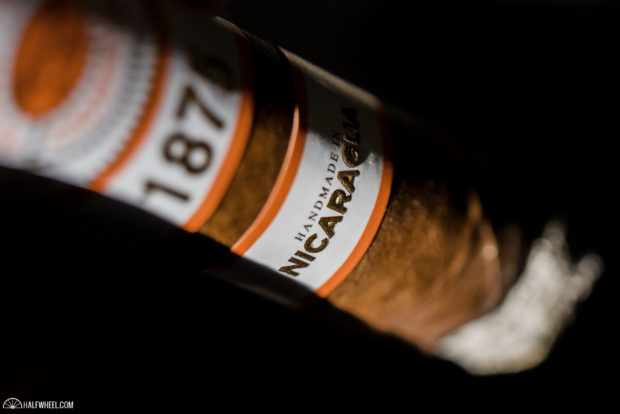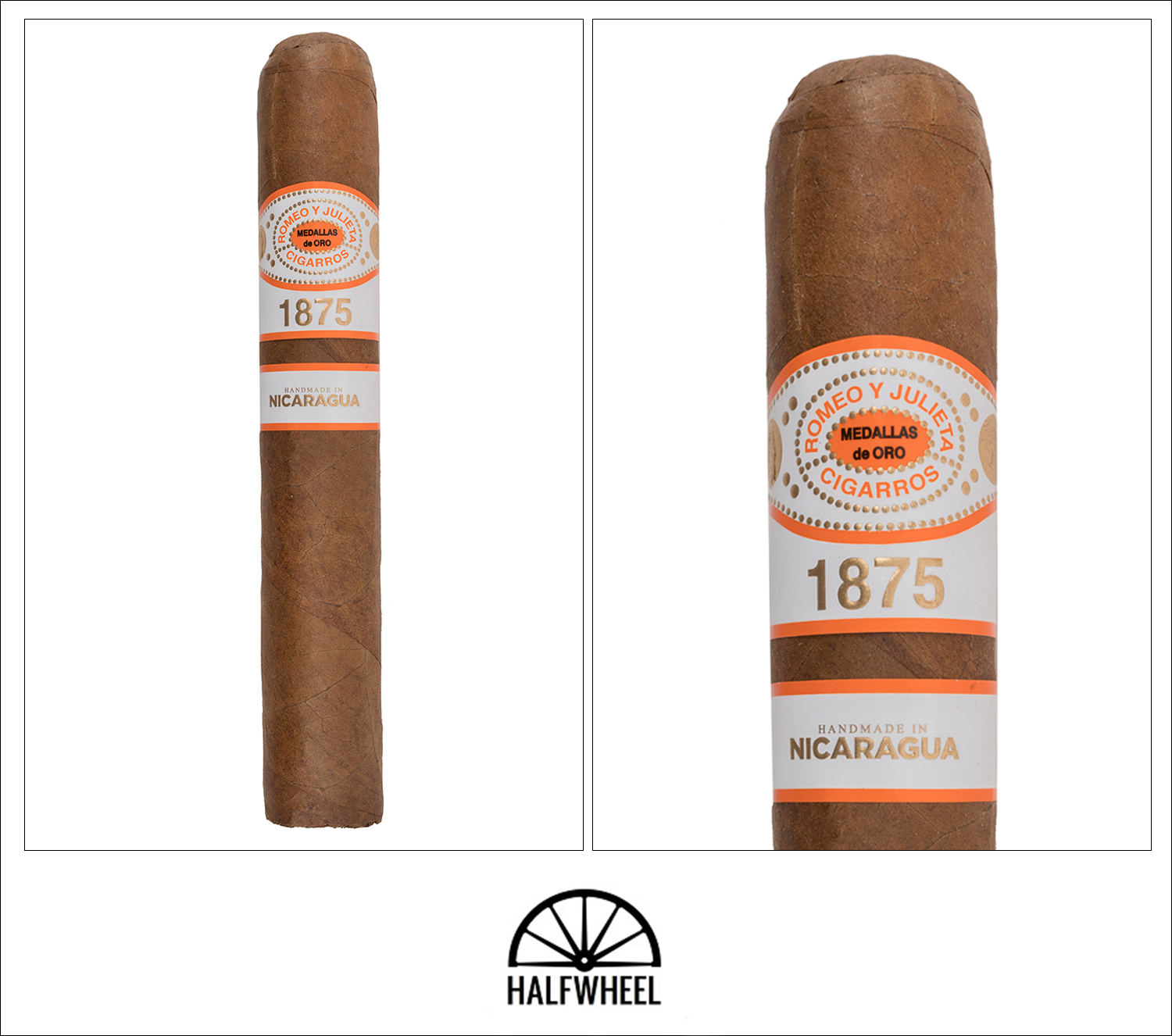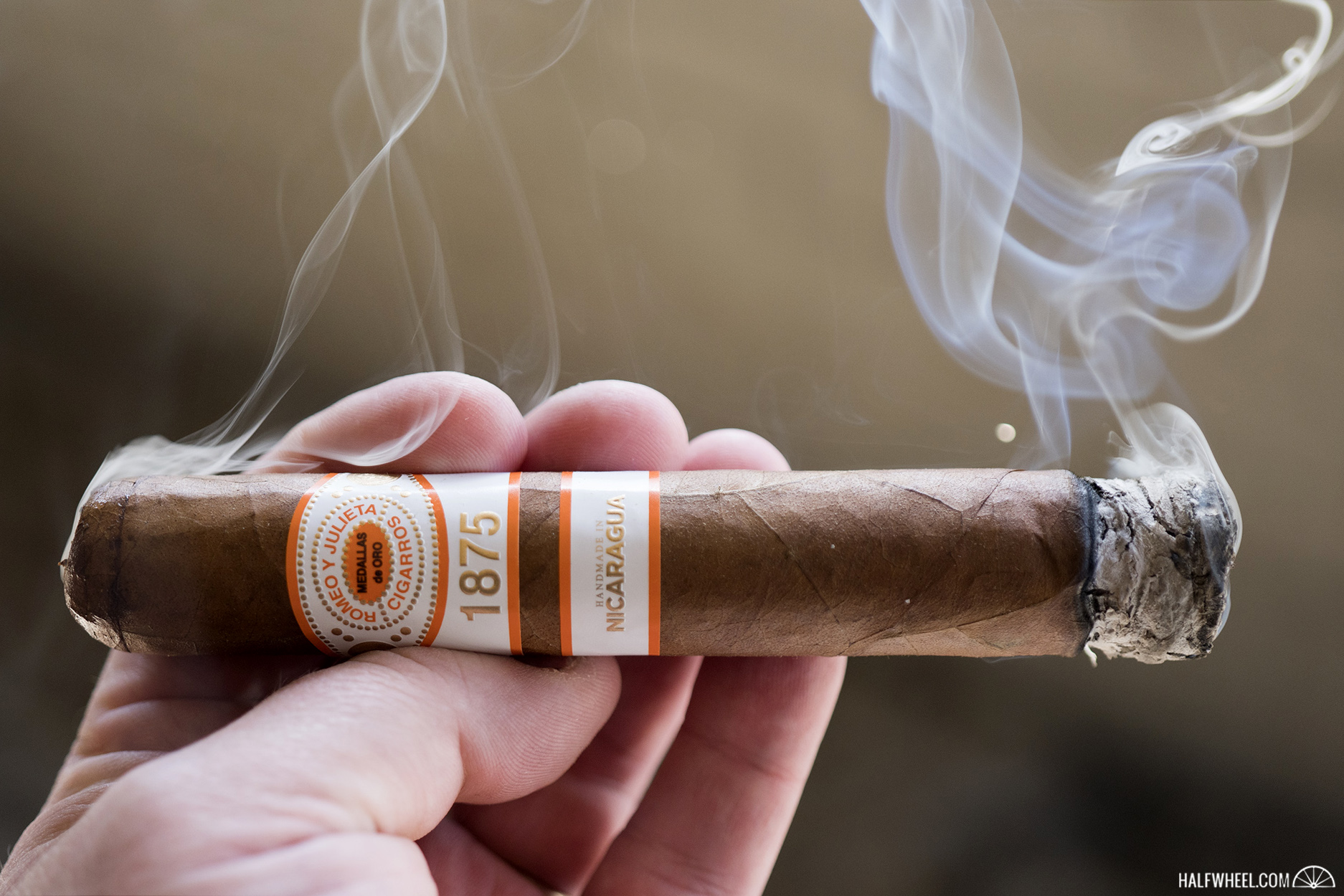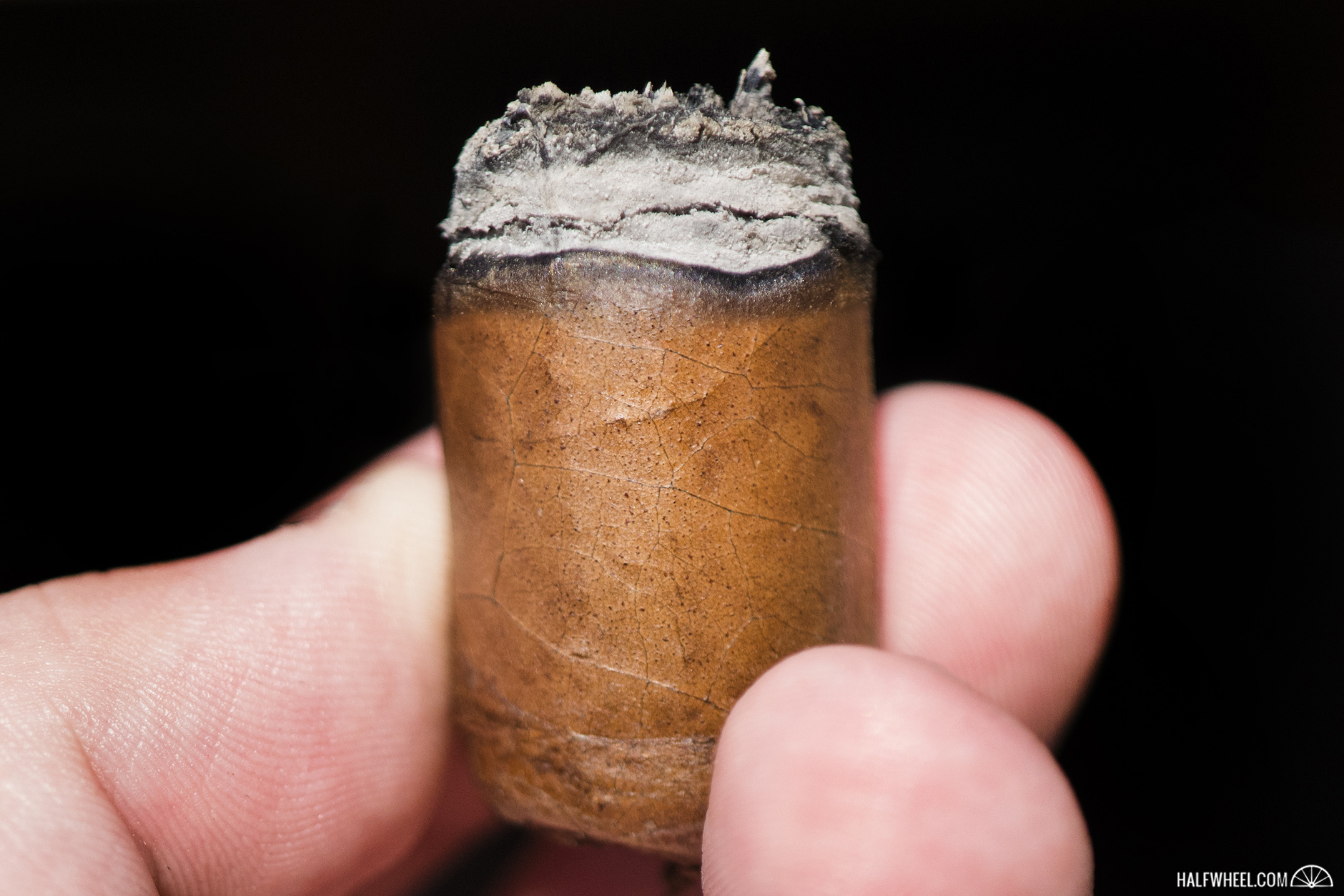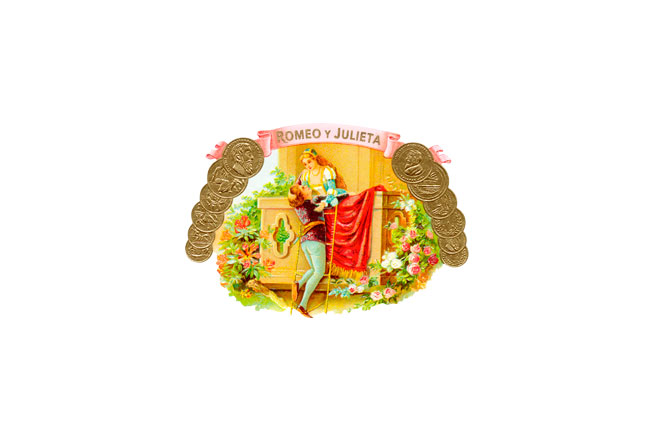In 2016, Plasencia Cigars produced the first 100 percent Nicaraguan Romeo y Julieta brand for Altadis U.S.A., the Romeo 505 Nicaragua by Romeo y Julieta, the moniker of which referred to Nicaragua’s telephone country code. A second Nicaraguan puro followed earlier this year when Tampa-based retailer Thompson Cigar was shipped the Romeo y Julieta RyJ Nicaragua by AJ Fernandez as a store exclusive.
Fast forward to July, when Altadis showed off a third example of a Nicaraguan Romeo during the 2018 IPCPR Convention & Trade Show. Dubbed the Romeo y Julieta 1875 Nicaragua, the four size regular production line with a blend composed of all Nicaraguan habano leaves produced at the Plasencia factory in the city of Estelí. Three of the vitolas—the Bully, Toro and Churchill—are packaged in boxes of 25, while the 6 x 60 Magnum is sold in boxes of 20.
The Romeo y Julieta 1875 Nicaragua debuted in four different vitolas.
- Romeo y Julieta 1875 Nicaragua Bully (5 x 50) — $6.80 (Boxes of 25, $170)
- Romeo y Julieta 1875 Nicaragua Toro (6 x 50) — $7.10 (Boxes of 25, $177.50)
- Romeo y Julieta 1875 Nicaragua Churchill (7 x 52) — $7.70 (Boxes of 25, $192.50)
- Romeo y Julieta 1875 Nicaragua Magnum (6 x 60) — $7.95 (Boxes of 20, $159)
- Cigar Reviewed: Romeo y Julieta 1875 Nicaragua Magnum
- Country of Origin: Nicaragua
- Factory: Plasencia Cigars S.A.
- Wrapper: Nicaragua (Habano)
- Binder: Nicaragua (Habano)
- Filler: Nicaragua (Habano)
- Length: 6 Inches
- Ring Gauge: 60
- Vitola: Gordo
- MSRP: $7.95 (Boxes of 20, $159)
- Release Date: July 2018
- Number of Cigars Released: Regular Production
- Number of Cigars Smoked For Review: 3
Visually, the Romeo y Julieta 1875 Nicaragua is covered in a golden-hued wrapper that is sandpaper rough to the touch and covered in very obvious veins. In addition, there is plenty of oil and the cigar is just short of rock hard when squeezed. The aroma from the wrapper is a combination of strong dark chocolate, sawdust, peanut shells, cedar, leather, earth and manure, while the cold draw includes flavors of sawdust, white chocolate, cedar, creamy nuts, white pepper, a touch of spice and slight maple syrup sweetness.
It takes a little longer than expected to light—even for the large vitola—but once the foot of the Romeo y Julieta 1875 Nicaragua was lit, the flavors started coming fast: strong flavors of both creamy cedar and earth, with lesser notes of leather, charred meat, hay and licorice. There is a touch of spice pulled over from the cold draw on my tongue, but it is not going to last long, while there is a little white pepper on the retrohale that plays nicely with some slight vanilla bean sweetness. Despite taking just a little off the cap, the draw is a bit loose for my tastes—albeit within normal limits—but the burn is excellent so far, and there is an abundance of thick white smoke pouring from the foot that does not seem to be letting up anytime soon. The overall strength is virtually non-existent so far, ending the first third barely above the mild point, although I don’t think it will stay there much longer.
As the second third of the 1875 Nicaragua begins, the dominant flavors begin to shift from creamy cedar and earth to more of a leather and creamy hay combination, followed by notes of cashews, dark chocolate, cinnamon, espresso, floral and cocoa nibs. As expected, the spice on my tongue is totally gone by the halfway point, but both the white pepper and vanilla bean sweetness on the retrohale have actually increased noticeably. Construction-wise, the burn has stared wavering a bit and the draw is still a bit loose for me, but the amount of smoke emanating from the foot does not seem to be slowing down. The overall strength has increased a bit, but still fails to come close to the medium mark by the time the second third ends.
Unfortunately, there is not much change in the profile of the Romeo y Julieta 1875 Nicaragua during the final third, as the leather and creamy hay combination easily remain the dominant flavors, along with nuts, chocolate, coffee beans and earth. The white pepper and vanilla bean sweetness also remain about the same level, although there is a bit of a return of the spice on my tongue from the first third that makes itself known before quickly disappearing again, this time for good. There is also little change in the construction, as the draw is still a bit loose for me and the burn gives me a few problems, albeit none that are too difficult to fix with a touchup from my lighter. Finally, while the overall strength does increase by the end of the cigar, it still fails to hit the medium mark, ending up just short by the time I put the nub down.
Final Notes
- Interestingly, there is actually another Altadis creation named 1875 Romeo y Julieta, which is a totally different line from the Romeo y Julieta 1875.
- This cigar had one of the strongest aromas of dark chocolate off of the foot that I have gotten from a cigar in quite a while.
- The 1875 in the name refers to the year the Romeo y Julieta brand was fully established in Cuba, although the line actually debuted sometime in the 1850s and was officially registered in 1873.
- Altadis U.S.A. advertises on halfwheel.
- Cigars for this review were purchased by halfwheel.
- Final smoking time for all three samples averaged two hours and 11 minutes.
- If you would like to purchase any of the Romeo y Julieta 1875 Nicaragua, site sponsors Atlantic Cigar, Cigars.com, Corona Cigar Co., Famous Smoke Shop, JR Cigar, Serious Cigars and Thompson Cigar Co. all have them in stock.
While I was hoping it not be the case with the Romeo y Julieta 1875 Nicaragua, the all habano blend turned out to be enjoyable but extremely linear, at least in the 6 x 60 Magnum vitola. Having said that the construction was quite good overall, and you can’t beat the price with a stick. In the end, while there are a number of more complex, more flavorful and better-constructed puros on the market, very few of them are priced as aggressively as the Romeo y Julieta 1875 Nicaragua, and that alone will be worth the price of admission for some.

